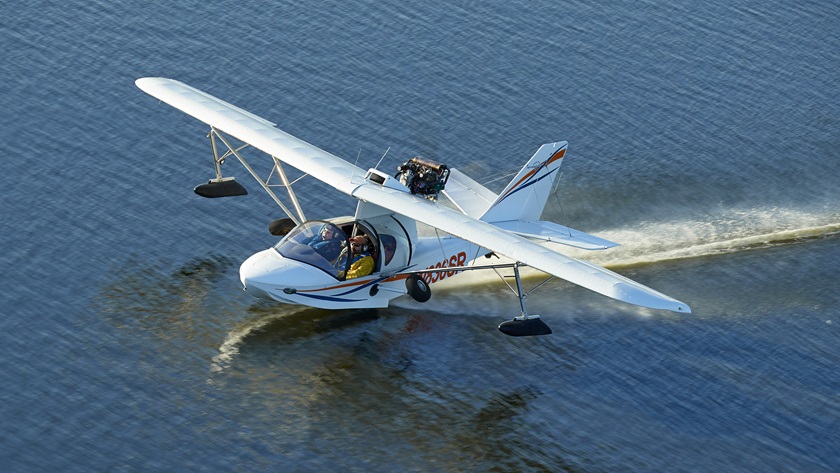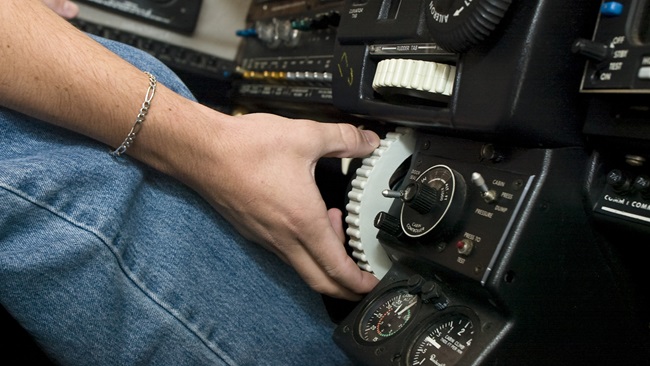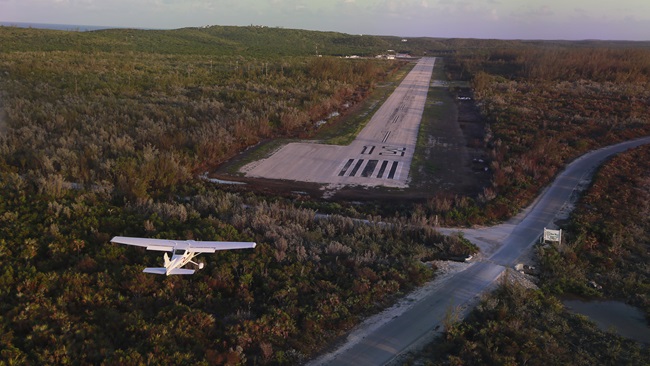Water wings
Get a seaplane rating—and fly solo—in this club's SeaRey
How can a pilot be overdressed in jeans and sneakers? When the airplane you are about to fly is a Progressive Aerodyne SeaRey.

Shorts and water shoes are more appropriate gear for the SeaRey, especially when you’re in Florida. If you want to beach the SeaRey on a lakeshore, then you’re ready for anything. But don’t wear flip flops. Those can come off in the water.
And you will wish Flying Fish had a location closer to you after you fly the SeaRey. Currently the club has locations in Lakeland and St. Louis, Missouri. Flying Fish President Chris Hinote says he plans to open more sites in the future.
Right now he’s introducing me to the SeaRey—the Adventure model with a 100-horsepower Rotax 912 engine and standard three-pack of flight instruments. (The Tavares, Florida, manufacturer also makes the Elite model that comes with a Rotax 914 115-hp engine and Garmin G3X Touch avionics.) I’ve logged an hour in a classic Taylorcraft on floats, but this SeaRey with a Garmin 696 in the panel seems futuristic by comparison.
Climbing into the SeaRey is somewhat simple: step on the tire with your left foot; place your right foot on the seat; and lower yourself as gracefully as you can manage. Don a life vest before you climb into the airplane, to save some time.
The SeaRey’s big canopy is eye-catching. It can be flown with the canopy open or closed. The track-mounted canopy is split down the center and the sides can be raised or lowered independently of each other. If you want to fly with the canopy open but your right-seater would rather not, everybody’s happy. Sometimes you’ll get a little wet flying with the canopy open, but isn’t that part of the fun of seaplane flying?
The SeaRey shares traits with other LSAs I’ve flown. It has a single handbrake but no toe brakes. The throttle and brake are located together on the central throttle quadrant. It carries 23 gallons in a single tank, and the manufacturer recommends running it on premium unleaded auto fuel.
But the comparisons end there. This is, after all, an amphibious aircraft, fitted with wing floats and gear that retract to facilitate water landings. The Rotax 912 is positioned pusher-style on the wing behind the cockpit, open for all to see. The SeaRey’s nose serves as its hull, so there’s no room for an engine there. That pusher prop provides a high thrust vector that causes the airplane’s nose to initially pitch up when you reduce power, or initially pitch down when you add power—the opposite of what you would experience in a Cessna. That can bite some pilots, particularly when performing a go-around, Hinote says.
The starting sequence is simple: set the brake, adjust the choke, and turn the key, keeping one hand on the throttle. The Rotax snaps to life, and with 5,000 rpm humming just behind your head, noise-canceling headsets are great to have.
The SeaRey handles very well on the ground. At no time did this tricycle-gear pilot feel as though it was going to get away from me. Hinote says you’ve got to really work to ground loop it.
In the air, the Adventure cruises at a leisurely 85 mph. But you’re only burning 3.5 to 4 gph at that speed, and it’s perfect for hopping from lake to lake to lake in central Florida.
For our first water landing, we clear the landing area, check the wind direction, and set an aiming point. The mnemonic GIFFS is printed on the panel and is part of the checklist, and it is repeated at downwind, base, and final: Gear up, check Instruments, Fuel pump on, Flaps 1 (10 degrees), and Spatial awareness—what’s ahead of us on the water, and who’s around us? We pitch for 75 mph, then repeat the checklist again on base, this time setting another 10 degrees of flaps and slowing to 70 mph. On final, repeat the checklist a third time, pitch for 65 mph and hold 65 mph at that power setting. At two to three feet above the water, raise the nose but don’t try to flare. Look at the far shoreline, ease the throttle back, and allow the airplane to settle onto the surface.
Since it’s critical that the landing gear be retracted for a water landing, when the airplane slows to a certain airspeed, the SeaRey has an audible alert that prompts, “Select landing”—water or land—to electrically retract or lower the gear. That, and the thrice-repeated GIFFS checklist, help the pilot to avoid the hazard of landing on water with the gear lowered.
Of course you can always lower the gear while in the water, hold the stick back, add power, and taxi up onto a beach or a boat ramp.
I loved flying the SeaRey for a bunch of reasons: The low-slung high-wing is easy to climb in and out of, and it feels solid on the ground, in the air, and in the water. It’s an LSA, but it has the zip of a larger airplane and a wide, comfortable cockpit.
Find out more about Flying Fish No Limits Flying Club at the website. You can purchase a new SeaRey from the Progressive Aerodyne factory. The Adventure starts at $119,000, and the Elite has a base price of $160,000. Progressive Aerodyne also sells an experimental version as a kit.
To learn more about seaplane flying in general, see the Seaplane Pilots Association website.




